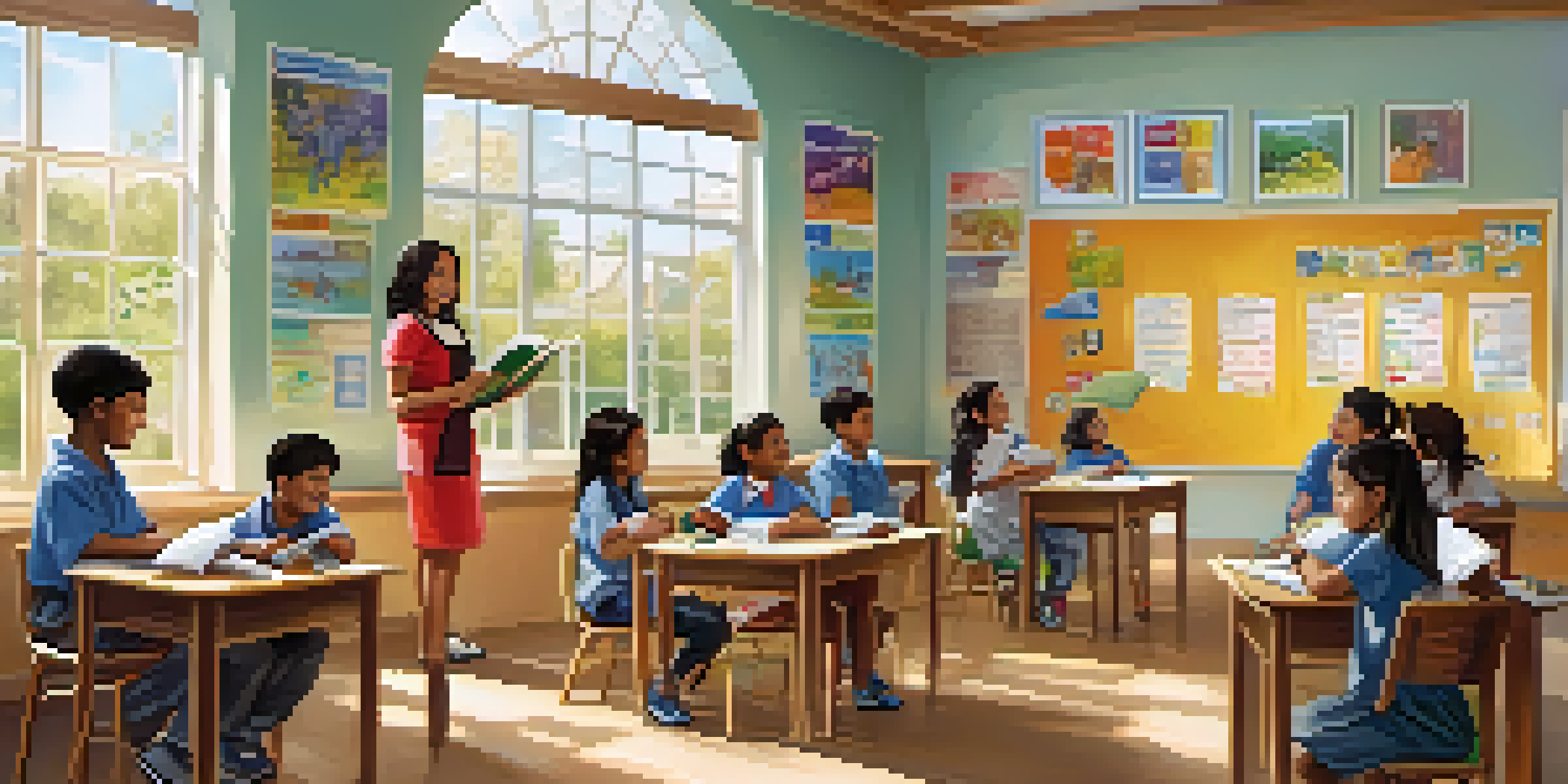Analyzing the Effect of Dialects on Language Acquisition

Understanding Dialects: What Are They Really?
Dialects are variations of a language that are specific to a certain region or group. They can include differences in pronunciation, vocabulary, and even grammar. For example, English spoken in the Southern United States differs significantly from that spoken in the UK, not just in accent but also in word choice and idioms.
Language is the roadmap of a culture. It tells you where its people come from and where they are going.
These variations can often reflect cultural identities and heritage, making them an essential part of how communities express themselves. Recognizing these differences is crucial, especially in a globalized world where communication takes many forms. Understanding the nuances of dialects helps us appreciate the richness of language.
Ultimately, dialects are not just 'incorrect' forms of a language; they represent a unique way of seeing and interpreting the world. This understanding sets the stage for exploring how dialects influence language acquisition.
The Role of Dialects in Early Language Development
From a young age, children are exposed to the dialect spoken in their homes and communities. This exposure shapes their initial understanding and use of language. For instance, a child growing up in a bilingual environment may blend elements from both dialects, enriching their linguistic repertoire.

Research shows that the dialect a child hears most often can impact their pronunciation and vocabulary choices as they develop. This early exposure can lead to a more profound connection to their cultural identity. It also emphasizes how crucial it is for parents and caregivers to communicate in a way that reflects their authentic speech.
Dialects Shape Early Language Skills
Children’s exposure to dialects in their homes influences their language development and cultural identity.
Moreover, children who learn in environments where their dialect is valued tend to have higher self-esteem and better educational outcomes. This illustrates that acceptance of dialect diversity can enhance language acquisition and personal growth.
Dialects and Their Impact on Second Language Acquisition
When learning a second language, the dialect of that language can significantly influence how learners perceive and use it. For example, a person learning Spanish from a Mexican speaker might find themselves adopting specific phrases and pronunciations typical of that dialect. This can create a sense of connection and familiarity.
The limits of my language mean the limits of my world.
However, exposure to multiple dialects of a language can also pose challenges. Learners might struggle with understanding various accents or vocabulary specific to certain regions. This diversity can lead to confusion, especially if learners are not well-prepared for these variations.
Ultimately, awareness of dialectal differences can enhance language instruction. Educators who incorporate various dialects into their teaching can help learners navigate these challenges while celebrating linguistic diversity.
Social Perceptions of Dialects and Their Effects
Social attitudes towards dialects can significantly impact language acquisition. In many cases, certain dialects are viewed as 'standard' or 'prestigious,' while others may be stigmatized. This perception can affect how learners feel about using their dialect, which can, in turn, influence their motivation to learn a language.
For example, a learner from a working-class background may feel embarrassed about their regional dialect, leading them to suppress it in favor of a more 'accepted' form of speech. This can create a disconnect between their identity and the language they are trying to learn, making the acquisition process more challenging.
Dialect Awareness Enhances Learning
Incorporating awareness of dialect variations in teaching can improve language acquisition and foster a supportive environment.
Encouraging a positive view of all dialects is essential for fostering a supportive learning environment. By valuing diverse dialects, educators can help learners feel more confident and engaged in their language acquisition journey.
Dialect Awareness in Language Teaching
Incorporating dialect awareness into language teaching can be transformative. Educators can highlight the richness of dialects by using materials that reflect various speech patterns. This approach not only enriches the learning experience but also validates students' backgrounds and identities.
For instance, using media—like songs, films, or literature—that showcases different dialects can engage learners and provide real-world contexts for their studies. This exposure allows students to appreciate the diversity within a language while improving their listening and speaking skills.
Additionally, discussing dialects openly in the classroom can foster critical thinking about language use. Learners can explore questions like why certain dialects are perceived differently and how language evolves, making their language acquisition more meaningful.
Challenges Faced by Dialect Speakers in Language Acquisition
Speakers of non-standard dialects often face unique challenges when learning a language. These challenges can range from difficulties in pronunciation to misunderstandings in grammar. For example, a speaker of African American Vernacular English (AAVE) might struggle with the traditional grammar rules of Standard American English, leading to frustration and confusion.
Furthermore, these challenges can be compounded by negative stereotypes and biases. Educators may unintentionally favor 'standard' dialects, leaving dialect speakers feeling marginalized. This can create barriers to effective communication and hinder the learning process.
Celebrating Linguistic Diversity Matters
Recognizing and valuing dialectal diversity enriches the learning experience and promotes a more inclusive society.
Recognizing these challenges is the first step toward creating an inclusive learning environment. By addressing biases and providing support tailored to dialect speakers, educators can help bridge the gap in language acquisition.
Celebrating Linguistic Diversity in Language Acquisition
Celebrating linguistic diversity is essential in fostering effective language acquisition. By embracing various dialects, we can create an educational atmosphere that nurtures all learners. This approach encourages students to take pride in their linguistic heritage while engaging with new languages.
For example, creating projects that allow students to share their dialects and cultural backgrounds can foster a sense of community. This not only enriches the learning experience but also promotes mutual respect and understanding among peers.

In the end, recognizing and celebrating dialectical diversity not only enhances language acquisition but also contributes to a more inclusive and harmonious society. It reminds us that language is not just a means of communication; it is a vital expression of our identities and experiences.